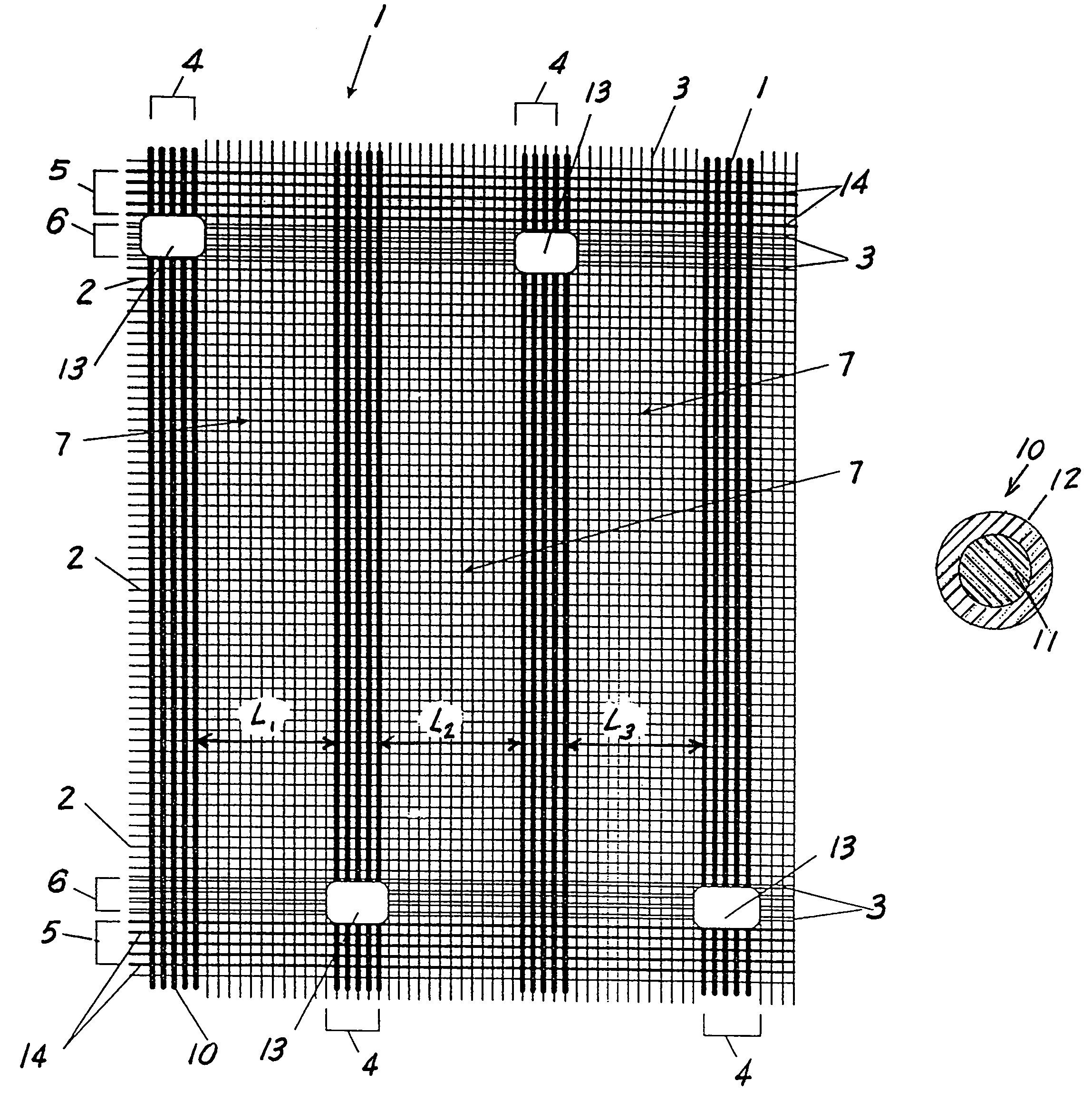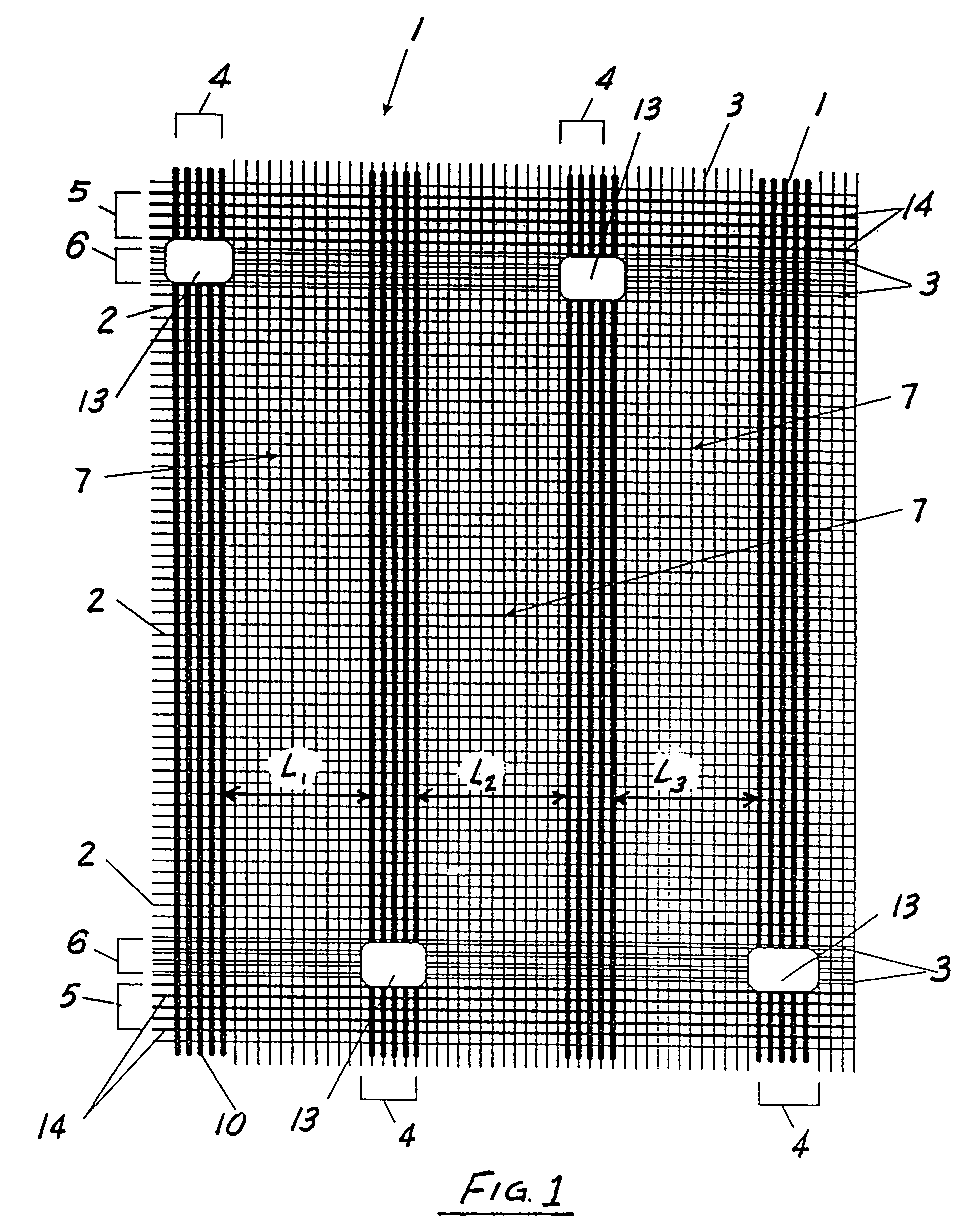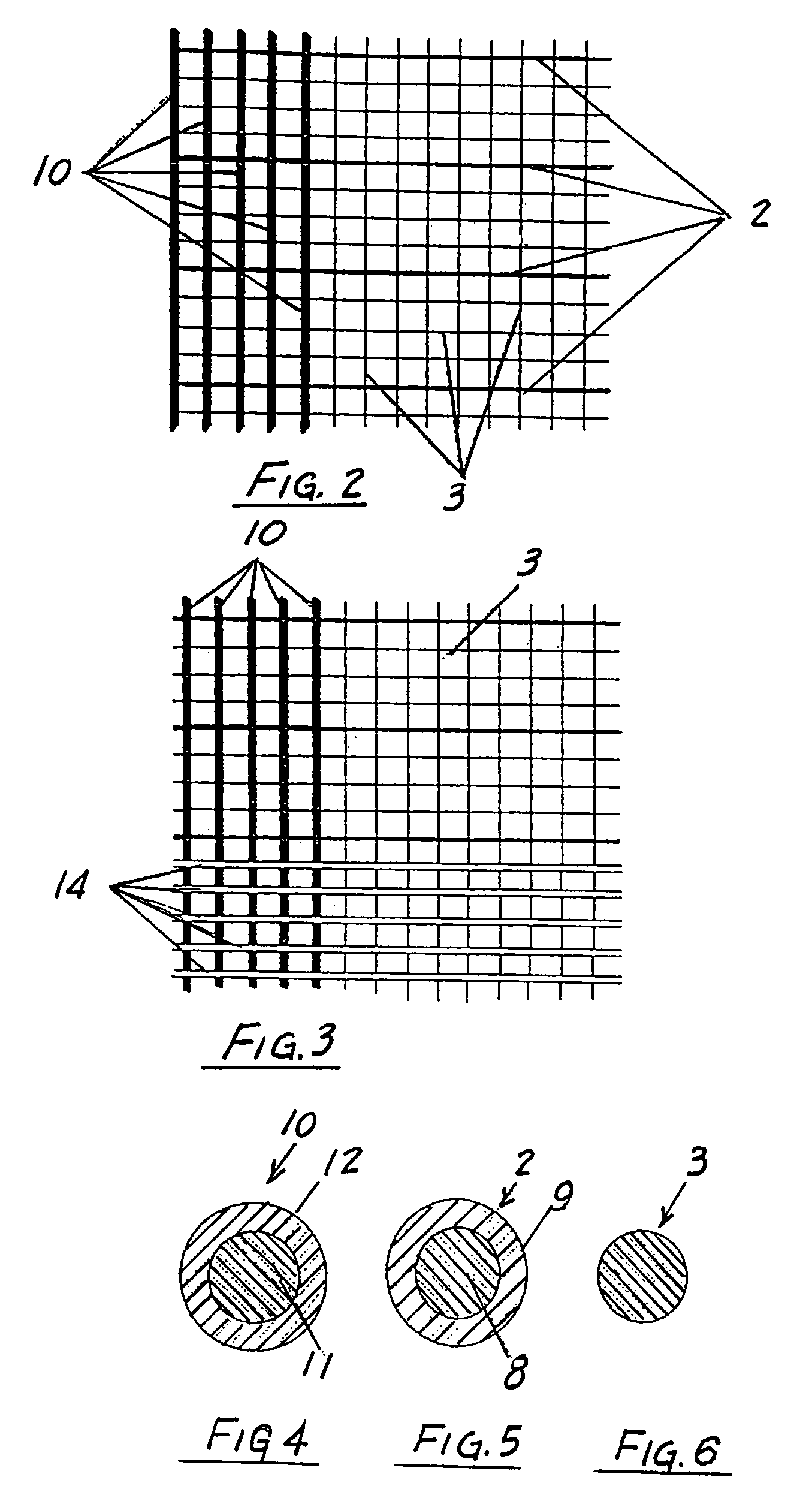Electric heating cloth method
a technology of electric heating cloth and manufacturing method, which is applied in the direction of resistor details, resistive material coating, ohmic-resistance heating, etc., can solve the problems of non-uniform heating, metallic heating elements are susceptible to bending and twisting, and the maximum heating temperature range is limited,
- Summary
- Abstract
- Description
- Claims
- Application Information
AI Technical Summary
Benefits of technology
Problems solved by technology
Method used
Image
Examples
example 1
[0095]100 mass parts of polyvinylidene fluoride thermosoftening plastic are dissolved by mixing in 600 mass parts of acetone. After that, 50 mass parts of industrial carbon produced from acetylene are added to the solution, the mixture is mixed and ground and 7 mass parts of colloid graphite are added during mixing. The resultant mixture is ground again.
[0096]The polymer resistive material is applied on 35-gauge twisted polyester thread that has 40 twists per meter (linear density —28.6 tex (0.0286 g / m). The polymer resistive material is applied on the fiber at 20° C., at the fiber pulling speed of 25 m / min. The thread goes through a resistive material solution and then through a spinneret whose orifice diameter controls the amount of the resistive material to be applied on the fiber. When the fiber comes out of the spinneret, it is dried in the hot air stream at 105–110° C. in order to remove the solvent and then wound on a spool. This results in production of conducting resistive ...
example 2
[0097]100 mass parts of polyvinylidene fluoride thermosoftening plastic are dissolved by mixing in 700 mass parts of acetone. After that, 15 mass parts of industrial carbon produced from acetylene are added to the solution, the mixture is mixed and ground and 20 mass parts of colloid graphite are added during mixing. The resultant mixture is ground again.
[0098]The polymer resistive material is applied on the thread, as described in Example 1.
[0099]This results in production of conducting resistive thread whose characteristics are shown in the Table, examples 2 / 1 and 2 / 2.
example 3
[0100]100 mass parts of polyvinylidene fluoride thermosoftening plastic are dissolved by mixing in 650 mass parts of acetone. After that, 27 mass parts of industrial carbon produced from acetylene are added to the solution, the mixture is mixed and ground and 23 mass parts of colloid graphite are added during mixing. The resultant mixture is ground again.
[0101]The polymer resistive material is applied on 20-gauge twisted polyester thread that has 50 twists per meter (linear density —50 tex (0.050 g / m) at the fiber pulling speed of 20 m / min. This results in production of conducting resistive thread whose characteristics are shown in the Table, examples 3 / 1 and 3 / 2.
PUM
| Property | Measurement | Unit |
|---|---|---|
| pulling speed | aaaaa | aaaaa |
| linear density | aaaaa | aaaaa |
| speed | aaaaa | aaaaa |
Abstract
Description
Claims
Application Information
 Login to View More
Login to View More - R&D
- Intellectual Property
- Life Sciences
- Materials
- Tech Scout
- Unparalleled Data Quality
- Higher Quality Content
- 60% Fewer Hallucinations
Browse by: Latest US Patents, China's latest patents, Technical Efficacy Thesaurus, Application Domain, Technology Topic, Popular Technical Reports.
© 2025 PatSnap. All rights reserved.Legal|Privacy policy|Modern Slavery Act Transparency Statement|Sitemap|About US| Contact US: help@patsnap.com



